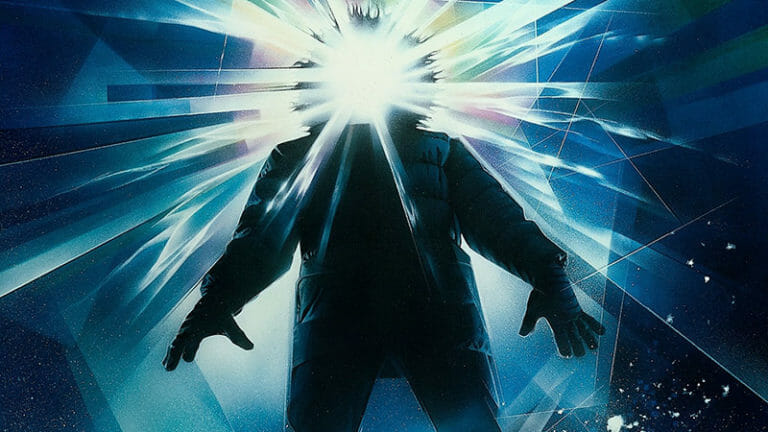Sign up for the
TSL Newsletter
and get $50 off Final Draft 12
By Ben Larned · June 8, 2017

Throughout the new millennium, the horror market has been plagued by sequels and remakes – a trend that has only now started to diminish. Genre fans had to watch as their favorite films were mashed through a meat grinder and regurgitated without soul, without flare, and without originality. Yet many speak about this plague of rehashes as if the phenomenon was born in the 21st century, and did not exist before. Quite the opposite – horror films have been made and remade since Edison’s days. Some of our most beloved genre offerings – Carpenter’s The Thing and Cronenberg’s The Fly, even the dubious ‘88 redux of The Blob – were crafted from classics 30 years old.
These remakes have something in common: they adapt properties and concepts that have speculative weight, but were filmed during eras that didn’t allow for full exploration of the ideas. The 1950’s were a time of cinematic censorship and conservatism, not to mention a lack of effects technology – the first American film to feature real onscreen gore was made at the end of this era, Fiend Without a Face. Films like The Fly, The Blob and The Thing from Another World – all to be adapted within 30 or so years of their first releases – did not have the opportunity to be anything but B-movies with really solid concepts. There is a lot to love about them anyway; Fly and Thing also managed to be unusually dread-filled compared to other sci-fi shlockfests at the time. Still, their monsters didn’t have a realistic weight, and their screenplays were content to simply thrill, rather than explore.
Read More: Top 10 Best and Worst Movie Remakes
 Several decades later, filmmakers had the opportunity to re-adapt these concepts and turn them into something authentically dark. Special effects had leapt forward a few years, but without the Hayes code, films could also go places that were beforehand not allowed. Bring in major talents like John Carpenter, Frank Darabont and David Cronenberg, and you have magic.
Several decades later, filmmakers had the opportunity to re-adapt these concepts and turn them into something authentically dark. Special effects had leapt forward a few years, but without the Hayes code, films could also go places that were beforehand not allowed. Bring in major talents like John Carpenter, Frank Darabont and David Cronenberg, and you have magic.
Cronenberg, already recognized as an auteur, approaches The Fly with literary sensibilities. His adaptation is far more Kafka than Weird Tales. Brundle’s emotional core is well-established in the patient beginning, bringing pathos to his transformation. This process is horrendously realistic (at times surreal), of course, due to the masterful makeup – but it wouldn’t have the lasting impact without the dramatic anchor. Cronenberg looks at this situation with all the dark humor, violence and despair that would occur if it happened to real people. His script (rewritten from an early draft by Charles Edward Pogue) includes plenty of gnarly, slimy moments, but their effect only goes so far as their shock value – the true impact of The Fly is in its tragic ending.
While not as influenced by works of high art, Carpenter’s redux of “Who Goes There?” approaches the material like Cronenberg did: the script creates real characters. It also follows the story more closely from a weird fiction standpoint. This allows for more visual exploration – hence Rob Bottin’s ingenious creature design, full of Lovecraftian tentacles and too many eyes. The film’s core, though, is a human one. Every character in Bill Lancaster’s script is ambivalent – we can’t trust them, not even good old Kurt Russell. This is a sharp contrast to many films from the nuclear age, when good and evil were as easy to distinguish as human and (crab-like) alien. With darker visuals comes darker themes.
Of these three films, The Blob is certainly the cheesiest, but it still takes a more realistic approach to its campy concept. A script co-written by Frank Darabont is already interesting. Sure, it’s about as far-fetched and straightforward as the original, but the new film does something different: imagines what it would really look and feel like to be dissolved by a massive heap of corrosive gelatine.
With the visual assistance of some seriously awesome practical effects, this grants the film the opportunity to show this incident in an almost realistic light. And the results are horrifying. It also takes risks in its storytelling, always surprising the audience in who they kill off first. While it never reaches the emotional heights of the first two examples, this version still makes for a subversive, meta-humored take on B-horror.
All of this goes to show that remakes aren’t anything new – they’ve existed since the dawn of cinema. But there is something missing from our current offerings. Films in the 80’s were all about concept – Poltergeist, A Nightmare on Elm Street and others all introduced something fresh and explored it to its full visual extent. Some of these classics could use more emotional backbone and character development; but these remakes don’t exactly offer that. Most of them appear to be focused on making their source material darker, a little bit more violent, overall less human – perhaps a misinterpretation of what modern horror fans want. The concepts can’t be made better, so what are we left with?
We must create new concepts, for one; but it’s necessary to remember our reasons for loving these classic films so much. Even if they were born from another property, a dreaded remake, they attacked their ideas with imagination and fervor – exploring them as if they were really happening. Their principles should carry over into our modern system. We can’t rely on increased gore and improved effects, but we can still bring fresh perspectives on an important aspect: the writing.